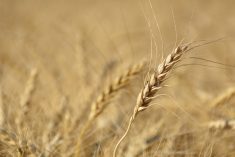The first estimates of 2009 pulse and special crops plantings are out and they are wildly divergent.
Brian Clancey, editor of Stat Publishing newsletter, anticipates 7.13 million acres, down slightly from 7.14 million acres in 2008.
“Land in field peas is expected to drop 7.6 percent in the face of rising on-farm stocks. This will be mostly offset by increases in land sown to lentils, dry edible beans, canary, mustard and sunflower seed,” he said in the Nov. 22 issue of his newsletter.
Clancey forecasts an 11 percent increase in lentil plantings to 1.74 million acres.
Read Also

Why feds imposed EV tariffs
Moe and Kinew have a fight on their hands when it comes to eliminating the EV tariff. Canada has to worry about pissing off the U.S. and Mexico and hundreds of thousands of auto workers.
Larry Weber, analyst with Weber Commodities Ltd., predicts a three percent increase in peas and a whopping 32 percent hike in lentils.
Weber noted that pea movement has been slow, putting pressure on ending stocks that could reach one million tonnes. That would smash the previous record of 595,000 tonnes set in 2004-05.
Another bearish factor for peas is that India’s winter seeding is running 25 percent ahead of last year’s pace. But if fertilizer prices remain high, he is confident Canadian farmers will grow more peas.
Weber’s lentil estimate is also predicated on high fertilizer prices and the assumption that new crop prices will be 25 cents per pound or better.
“Cash flow and movement of lentils has been good for three years,” he said in the Nov. 21 edition of his daily newsletter.
“Two million acres is within reach providing old crop is moved out in an orderly and profitable manner.”















